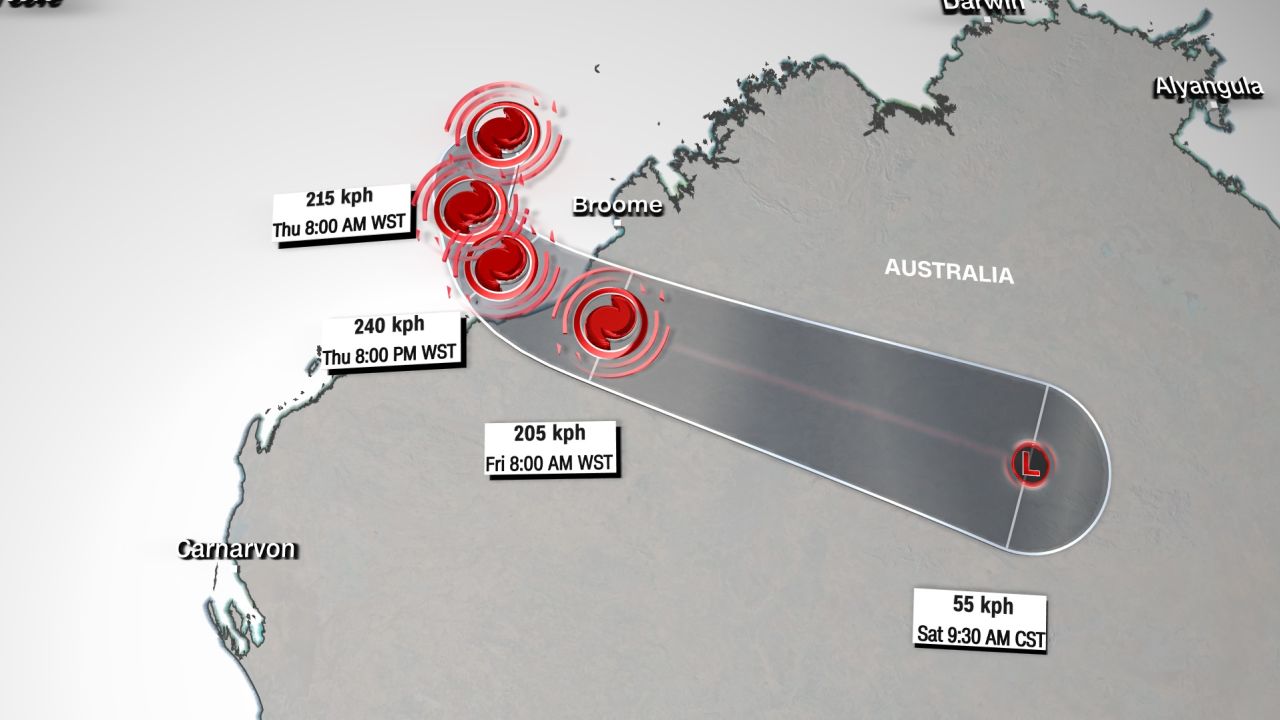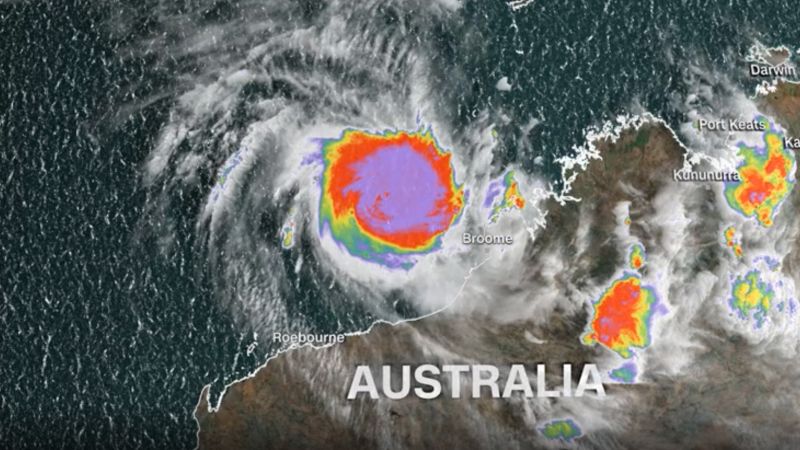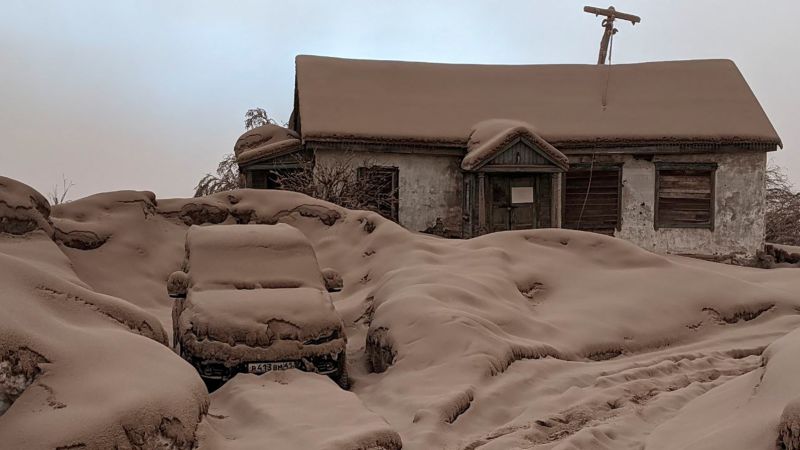Cyclone Ilsa rapidly intensifies as it approaches landfall in Western Australia

Brisbane, Australia
CNN
—
A massive cyclone swirling off Australia’s western coast will likely make landfall as a category 5 storm – the strongest on the national scale – according to the country’s official forecaster.
The Bureau of Meteorology (BOM) expects Cyclone Ilsa to cross the Pilbara coast of Western Australia Thursday evening or Friday morning local time, between Port Hedland and Wallal Downs, lashing the region with wind gusts in excess of 285 kilometers per hour (177 miles per hour).
Strong winds are already being felt in coastal areas, hours ahead of Ilsa’s predicted landfall, and emergency services are imploring people to lock up anything that might take flight.
“Winds of this strength are extremely dangerous. Not only can they bring down trees, power lines, and damage roofs and houses, but they can also lift large loose objects from your yard – boats, trailers or caravans – and loft them into the air,” said BOM’s senior meteorologist Miriam Bradbury.
Australia uses a five-tier system to categorize cyclones, a different system to the Joint Typhoon Warning Center which earlier clocked Ilsa’s winds at 215 kph (134 mph), making it the equivalent of a category 4 Atlantic hurricane.
The region is sparsely populated, and the largest town near the storm’s eye is Port Hedland, home to around 16,000 people. Aboriginal communities, cattle stations, mining sites and tourist operators are dotted around the area.

Cyclone Ilsa is also expected to dump heavy rain on the region – as much as 200 to 300 millimeters, according to BOM – and vast areas of the state are under flood watch.
“Riverine flooding may significantly impact roads and access routes, with many paths becoming muddy or even inaccessible over the coming days,” Bradbury said.
The strongest storm ever to hit any part of Australia was Cyclone Monica, which arrived in 2006 with sustained winds around 290 kph (180 mph), as it swept across the eastern and northern parts of Australia.
That cyclone missed highly populated areas but brought down trees and caused severe damage to vegetation along with a storm surge up to six meters high.







